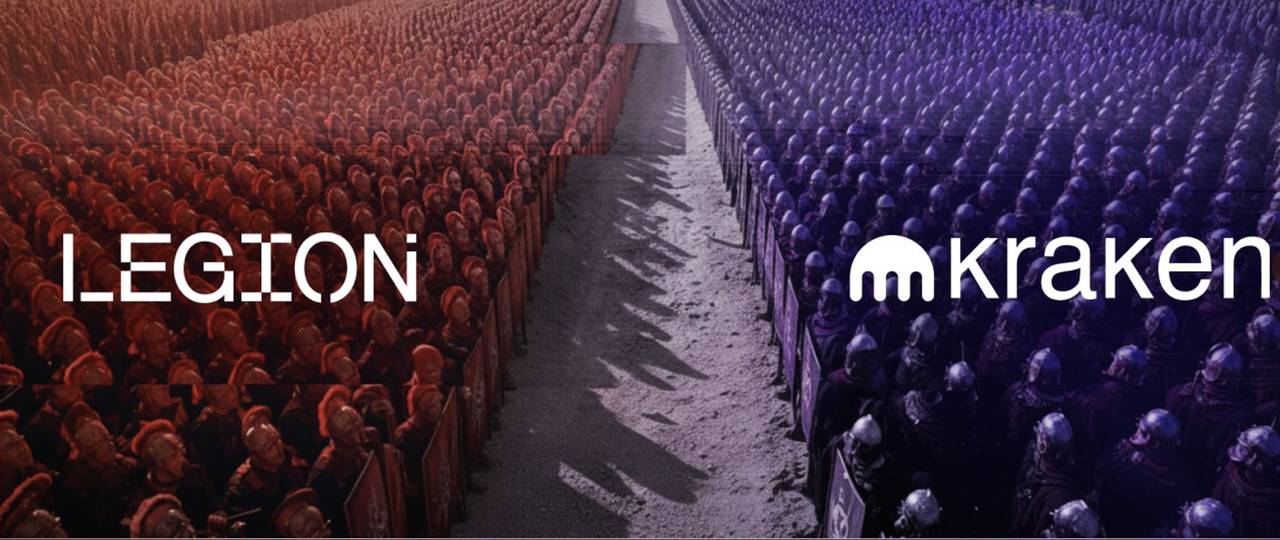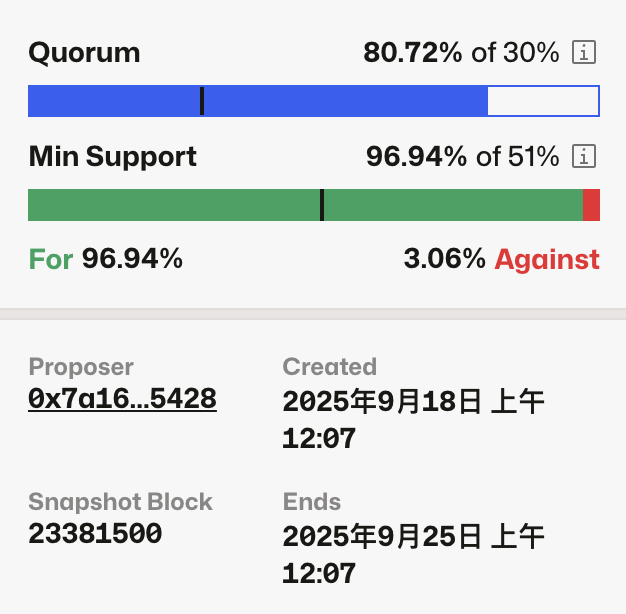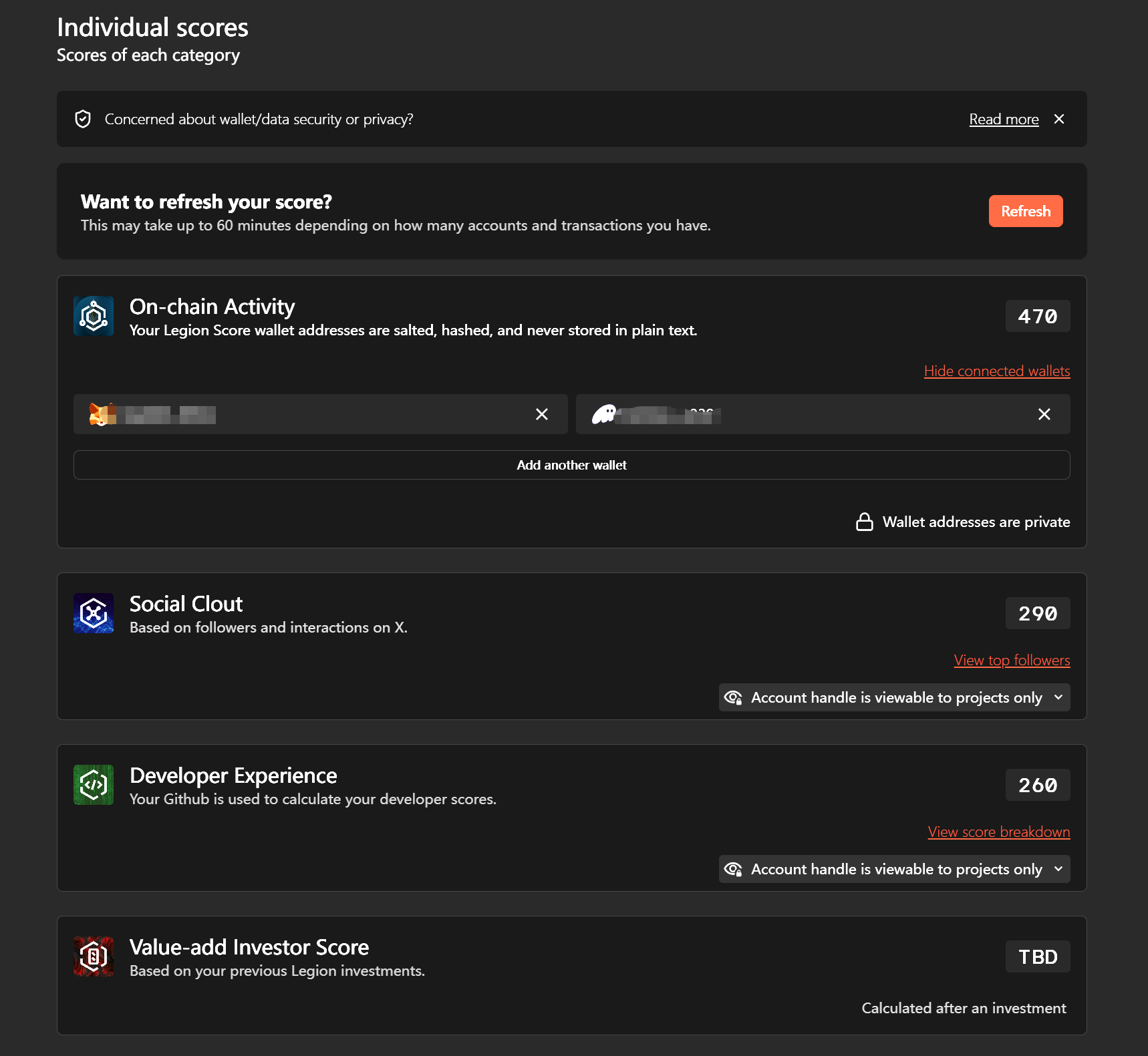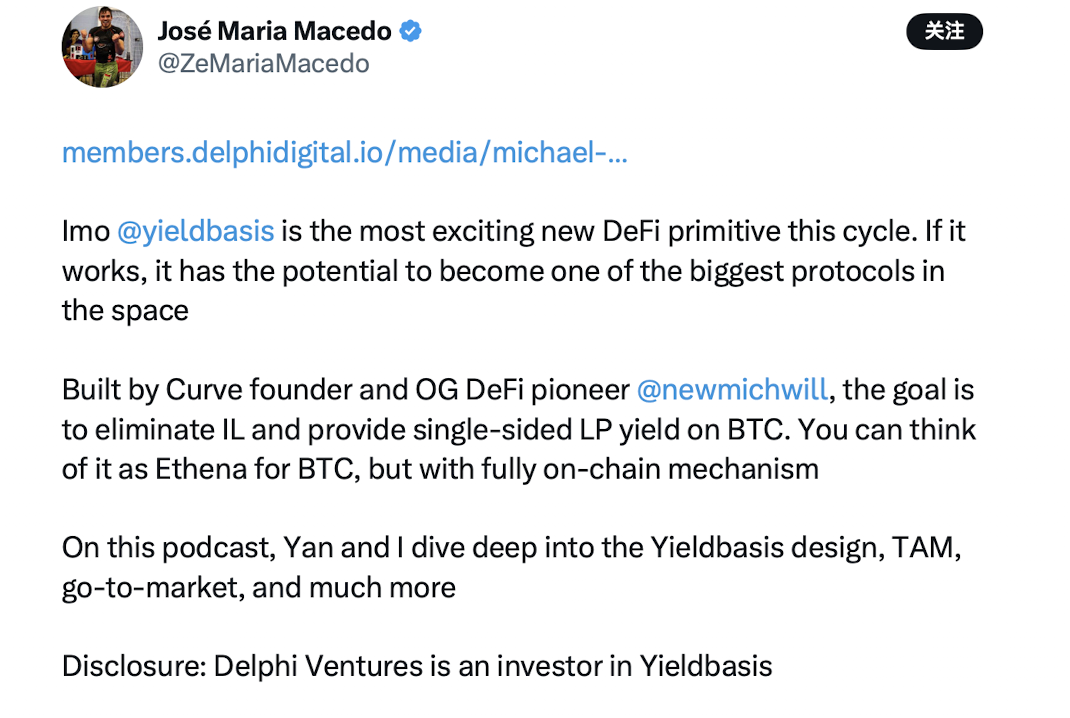Yield Basis carries the market's dual expectations for technological innovation and wealth effect.
Written by: Umbrella, Deep Tide TechFlow
In mid-September, the well-established exchange Kraken, in collaboration with the ICO platform Legion, is set to launch its token issuance platform Kraken Launch with its first project, Yield Basis. This move marks Kraken as another mainstream exchange to enter the Launchpad business following Binance and OKX.
As the inaugural project, Yield Basis is developed by Michael Egorov, the founder of the well-known DeFi project Curve. This BTCFI protocol aims to provide impermanent loss protection for BTC holders and has already sparked widespread attention and discussion in the crypto market.
To understand the market's expectations for Kraken Launch and Yield Basis, it is necessary to review the performance of other exchanges' Launchpads and the investment logic behind them.
The History of Exchange IPOs
In the past year, major exchanges have created impressive returns through their Launchpads. Binance's Alpha single number once averaged over 1500 US dollars in monthly profits, and although OKX's recent X Launch has been controversial, various crypto communities have been flooded with X Launch tutorial guides, indicating the market's eager anticipation and expectations for such products.
Many projects that launched through exchange Launchpads have also performed well in the market. For instance, $MYX, which launched through Binance Alpha in May, surged nearly 20 times at the beginning of this month. If users held Binance Alpha, they received an airdrop of 1667 $MYX tokens, leading to potential returns that even approached 30,000 US dollars at one point. This exaggerated data has triggered a new wave of FOMO sentiment in the market regarding exchange Launchpads.
These figures reflect the core logic of the market's FOMO towards established exchanges: high-quality projects launched by reputable exchanges often gain significant liquidity premiums and attention, and this key information translates into actual investment returns.
This also explains why the current market holds such an optimistic attitude towards the Kraken Launch in collaboration with Legion. On one side is a long-established exchange with 14 years of operational history focusing on compliance, and on the other is a new launch platform claiming to be "the world's first ICO underwriter." The collaboration between the two has created a platform that inherently possesses advantages such as scarcity and high liquidity from its inception.

Moreover, unlike traditional Launchpads, projects launched through Kraken Launch can immediately go live on the Kraken exchange after the sale ends. This clear expectation significantly enhances the market's anticipation for the returns from this IPO.
From a timing perspective, the data from various exchanges' Launchpads already demonstrates that the market is currently experiencing a high level of FOMO for this category of products, and this sentiment will naturally spill over to the new platform. The launch of the first IPO project by Kraken Launch at this time is highly likely to capture the continuation of this sentiment.
However, it is important to note that Kraken Launch, as a newcomer, faces considerable challenges. Binance and OKX have already captured the majority share of the Launchpad market, making it difficult for the new platform to attract quality projects. More importantly, the Yield Basis project itself has faced controversy within the Curve community, with some members viewing its 60 million crvUSD credit line as a systemic risk. These uncertainties could impact the actual performance of Kraken Launch's debut.
Yield Basis: A New Experiment by the Founder of Curve
As the first project to launch on Kraken Launch, Yield Basis's core value proposition is to address the longstanding issue of impermanent loss in the DeFi space. In traditional AMM mechanisms, significant price fluctuations can lead to liquidity providers earning far less than if they had held the assets directly, and this difference is known as impermanent loss.
In simple terms, when you provide liquidity to a trading pool, if the token price changes, your assets will automatically rebalance, and the final returns are often less than holding directly. Data shows that when prices fluctuate by five times, impermanent loss can reach 25%. This issue has plagued DeFi development for years and has deterred many BTC holders from participating in liquidity mining.
Yield Basis employs a double leverage mechanism, where users deposit BTC, and the protocol automatically borrows an equivalent amount of crvUSD to pair with BTC in the Curve pool, using the generated LP tokens as collateral for the debt. When the price of BTC rises, the protocol borrows more crvUSD to maintain the double leverage; when the price falls, it repays part of the debt.

Yield Basis is entirely built on Curve's infrastructure, utilizing Curve's CryptoSwap AMM and crvUSD stablecoin, ensuring technical stability.
However, innovation often comes with controversy. Just yesterday, the Curve DAO approved proposal 1206 to provide a 60 million crvUSD credit line for Yield Basis, which sparked considerable debate within the community. Supporters argue that this reflects the Curve ecosystem's support for innovation, but the concerns of opponents are not unfounded—this funding accounts for nearly 60% of the total supply of crvUSD, and any issues could jeopardize the stability of the entire system.

What is even more concerning is that members on the Curve forum pointed out a subtle conflict of interest: several key figures in the Curve ecosystem who participated in the voting are also investors in Yield Basis. Although Egorov responded that inviting well-known figures from the ecosystem to participate is "natural," this situation of being both referee and player inevitably raises questions about the fairness of the decision-making process.
In terms of token economics, the total supply of $YB tokens is 1 billion, with 30% allocated for community incentives, 25% for team distribution, 15% as development reserves, and the remaining 30% evenly distributed for investor sales, Curve ecosystem licenses, and partners.
On the other hand, in Yield Basis's mechanism, liquidity providers must choose between receiving BTC-denominated trading fees or YB token rewards. This design may work well in a bull market, as investors tend to choose tokens for potential appreciation; however, in a bear market, if the majority opt for stable BTC returns over YB tokens, it could put downward pressure on the token's value.

Participation Guide
The launch of the Yield Basis project consists of two phases, requiring us to register in advance on the Kraken and Legion platforms and complete KYC verification.
The first phase is a presale stage with a maximum of 20%, conducted on the Legion platform using a Merit-Based allocation mechanism. Users need to connect their wallets and accounts from platforms like Twitter and Github. Legion will calculate user scores based on on-chain activity, social contributions, and code contributions, with high-scoring users receiving a larger allocation in this phase.

The second phase will complete the sale of at least 80% of the remaining $YB tokens, taking place simultaneously on Legion and Kraken Launch, and will be open to all KYC-verified users on a first-come, first-served basis.

It is important to note that the KYC process on the Kraken and Legion platforms is relatively strict, requiring users to prepare relevant identification and proof of residence in advance. Additionally, users from certain regions (such as the United States, Canada, Australia, etc.) may not be able to participate in this IPO.
Currently, Yield Basis and Kraken Launch have not announced a specific launch time. However, since Kraken and Legion need 1-3 days to review KYC information, it is recommended that interested investors complete their registration and KYC verification in advance.
Market Observations and Related Discussions
According to community observations, the announcement of Kraken Launch's first IPO project experienced a brief delay of 18 hours, and the official did not provide a clear reason. As of the evening of September 24, there was no information or interface related to the Yield Basis launch visible on Kraken.
On the other hand, recent discussions about Yield Basis and Kraken Launch have shown a high degree of similarity, which may indicate potential risks.
The current market presents an optimistic attitude towards the launch of $YB by Kraken Launch, with supporters like José Maria Macedo, founder of Delphi Ventures, comparing YB to "the BTC version of Ethena," highlighting Yield Basis's innovative approach to impermanent loss solutions, while also emphasizing the pioneering contributions of its founder Egorov in the DeFi space and the market potential of the protocol.
Podcast link: “Michael Egorov: Yield Basis - Bringing Real Yield to Bitcoin”

At the same time, there are also some skeptical voices in the market, mainly focusing on concerns about the potential risks of Curve DAO, arguing that the 60 million crvUSD credit line could pose systemic risks.
Conclusion
As the inaugural project of Kraken Launch, Yield Basis carries the market's dual expectations for technological innovation and wealth effect.
However, as a new protocol still in the testing phase, investors need to fully recognize the technical risks and market uncertainties involved. In light of the FOMO sentiment, maintaining rational analysis and risk control is particularly important.
免责声明:本文章仅代表作者个人观点,不代表本平台的立场和观点。本文章仅供信息分享,不构成对任何人的任何投资建议。用户与作者之间的任何争议,与本平台无关。如网页中刊载的文章或图片涉及侵权,请提供相关的权利证明和身份证明发送邮件到support@aicoin.com,本平台相关工作人员将会进行核查。




